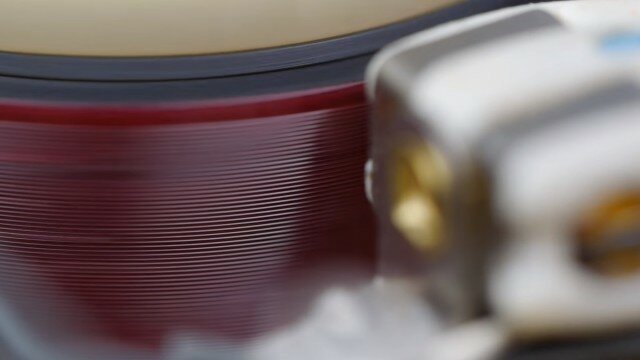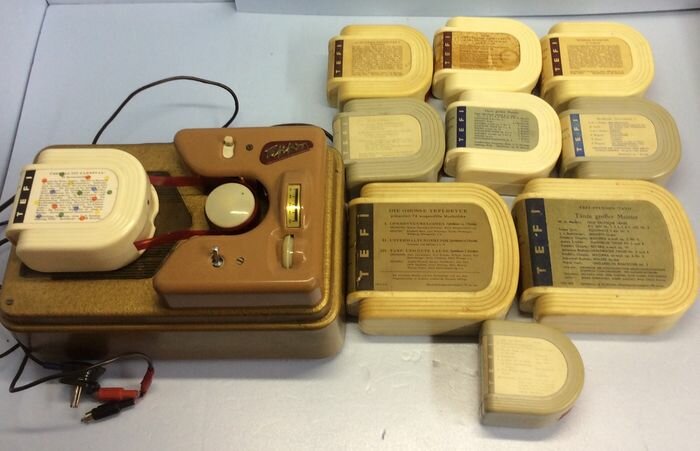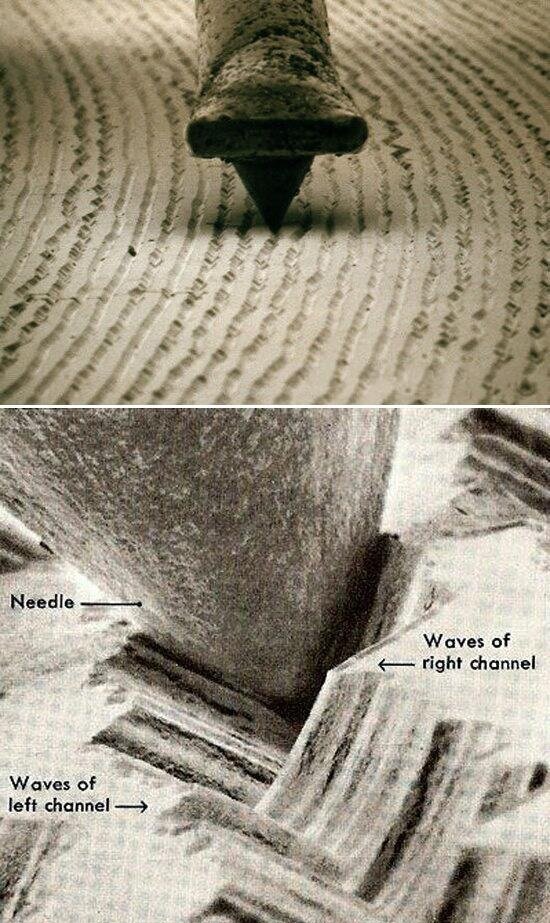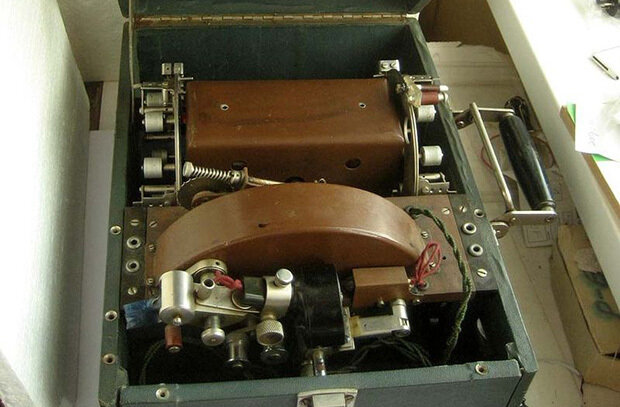
These unique turntables have been around for almost 20 years, and we know almost nothing about them. In 1930, at the height of the reign of shellac gramophone records, German engineer Karl Daniel proposed using a new material for sound recording - polyvinyl chloride. Gramophone equipment manufacturers and record companies were lukewarm about the idea. (and so we earn not bad).

, "TEFI". 5 - .

: , . .
, (4 5 ), , . . "Tefi" "", .




-15 , -1 , -4 .
. . , 33, 1/3 /. 1948 .
, . . 100 , 1,5-5 . ( 1000 .)

. , .

, -.
60 «Westrex» Western Electric. . 1965 .
, , TRACK 8. 1964 ( -). TRACK 8

, . TRACK 8 - , . .
TRACK 8 1982 . . " -1".
As for recording sound on tape, Soviet engineer Alexander Fedorovich Shorin received a patent for a mechanical sound recording device back in 1927. As a tape, he suggested using a standard 35 mm celluloid film (there was no other in the USSR). With a tape length of 300 meters and more than 50 tracks, the total recording time was 8 hours. The Shorinofon devices were commercially produced in 1932. They both recorded and reproduced, therefore they were used as a reporter's voice recorder. Also "Shorinophones" were used when filming sound films.

For this invention, the engineer Shorin received the Stalin Prize of the First Degree.
Previously, the article was published by me on the Useful Interests channel.